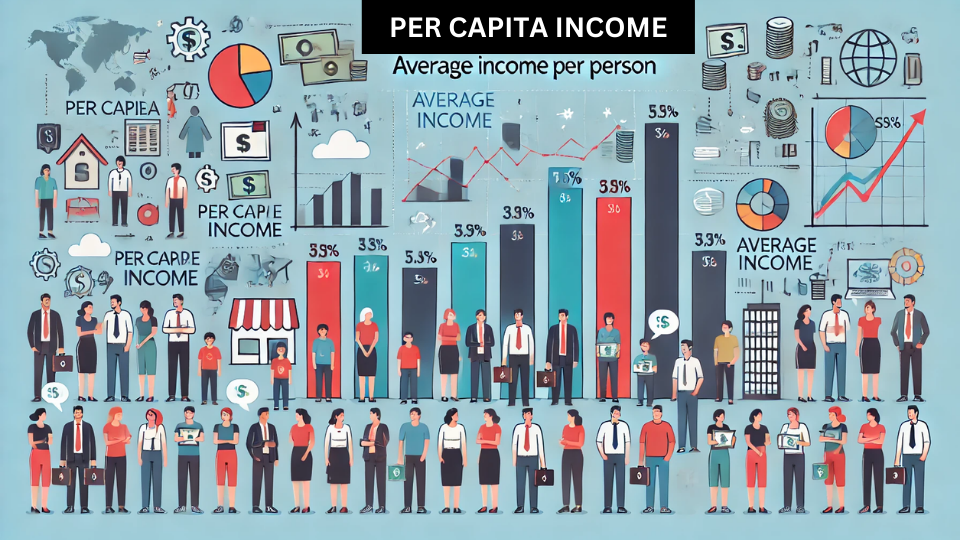Per capita income can also be considered as the average income earned by each person in a specific region, such as a country, state, or city during a particular period, typically one year.
It is calculated by dividing the region’s total income by its population. Per capita income is a key indicator used to assess the economic well-being and standard of living of the people in the region.

The Total Income is the aggregate income earned by all individuals in the region. It includes all the different types of income. The total population is the total number of people residing in that region.
Suppose, a country has a total income of $5 Trillion and the population is 250 Million. So, the per capita income is calculated as under:

The per capita income of $20,000 indicates that the average income of a person in this country is $20,000.
Importance and Uses:
- Economic Indicator:
- Per capita income is widely used as an economic indicator to compare the prosperity and standard of living between different regions. It helps in understanding the average economic output per person.
- Standard of Living:
- It provides insights into the standard of living and economic well-being of the population. Higher per capita income generally indicates a higher standard of living.
- Policy Making:
- Governments and policymakers use per capita income to design and implement economic policies. It helps in identifying regions that need more economic support and in allocating resources efficiently.
- International Comparisons:
- Per capita income allows for comparisons between countries, helping to understand the relative wealth and development levels globally. It is often used in international studies and reports.
- Benchmark for Development:
- It serves as a benchmark for assessing economic development and progress over time within a region.
Limitations:
- Income Distribution:
- Per capita income does not account for the distribution of income within the region. It provides an average figure that might not reflect income inequalities. A region with high per capita income might still have significant disparities between rich and poor.
- Cost of Living:
- It does not consider the cost of living variations between different regions. A higher per capita income in one region might not translate to a better standard of living if the cost of living is also higher.
- Non-Monetary Aspects:
- It focuses solely on monetary income and does not consider non-monetary factors such as access to healthcare, education, and environmental quality, which also affect the standard of living.
- Economic Structure:
- It does not reflect the economic structure or the diversity of economic activities in the region. For example, a country with a high per capita income derived from a single industry might be economically vulnerable.
Per capita income is a valuable economic metric that provides a snapshot of the average income and economic well-being of a population. While it has its limitations, it remains a crucial tool for economic analysis, policy-making, and international comparisons. To get a comprehensive understanding of economic well-being, per capita income should be considered alongside other indicators such as income distribution, cost of living, and access to essential services.

